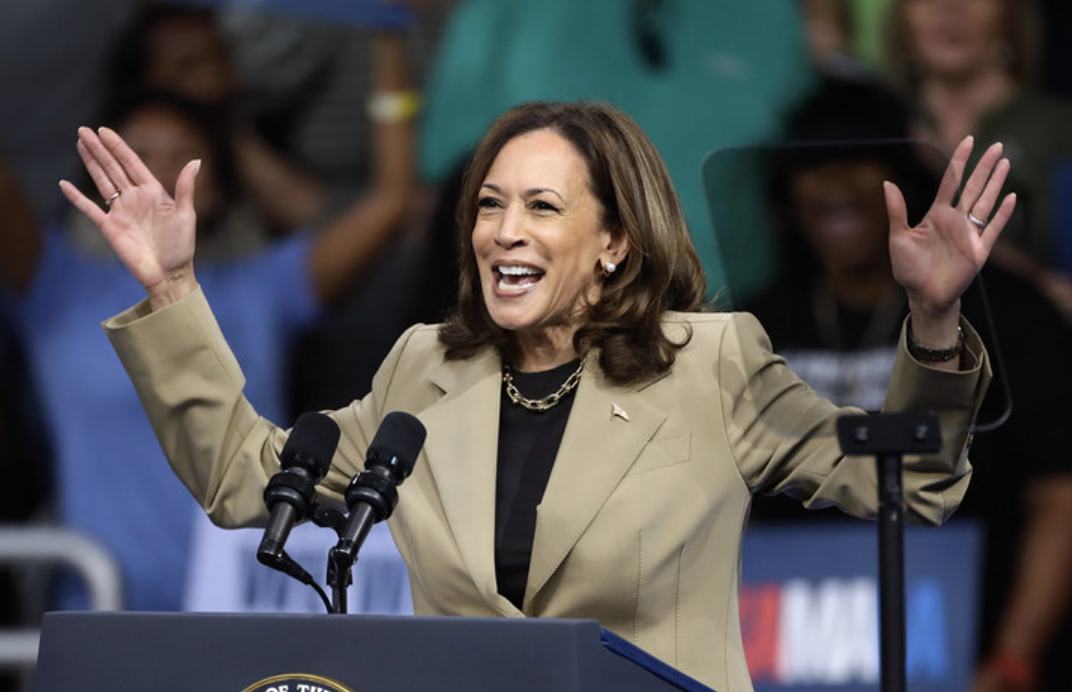Harris Faces Tough Polling Just Hours Before Fox News Showdown

Former President Donald Trump's campaign received more positive news on Tuesday with the release of a new survey showing him gaining ground against Vice President Kamala Harris in the critical swing state of North Carolina.
The poll, which gathered responses from 1,042 likely voters, found that 51 percent of North Carolinians plan to vote for Trump in the 2024 presidential race, while 46 percent support Harris.
The survey, conducted by Rasmussen Reports and American Thinker, a conservative online outlet, was carried out between October 9 and October 14.
This data suggests that Trump holds one of his largest advantages in North Carolina, a key state just three weeks ahead of Election Day. With the potential to become a pivotal battleground in November, polling overall has shown that the race between Harris and Trump is shaping up to be one of the closest this season.
According to Rasmussen's findings, voters identified the economy as the number one issue influencing their decision for the presidency. The second most significant issue was abortion, followed by border security.
When asked which topic was "the most important one for the next president to solve" among four options—abortion rights, illegal immigration, rising prices, and protecting our democracy—voters ranked immigration as their primary concern (29 percent), followed by rising prices (24 percent), protecting democracy (23 percent), and abortion rights (22 percent), according to Newsweek, which reported the results.
Most of the respondents (70 percent) expressed a desire for the next president to bring about a "major change." Furthermore, more than three-quarters (77 percent) of those surveyed said their decision was driven by "support" for a candidate, not simply to "keep one candidate from winning."
FiveThirtyEight’s tracking shows Trump leading by 0.9 points across statewide polls in North Carolina, holding 48.2 percent support to Harris’s 47.3 percent, according to Newsweek.
Trump’s 3-point lead in North Carolina was also reflected in a survey by The Washington Post, conducted from September 25 to September 29, which included responses from 1,001 registered voters.
Meanwhile, a separate poll conducted by ActiVote from September 7 to October 6, surveying 400 likely voters, showed Harris with a 2-point edge, garnering 51 percent support to Trump's 49 percent.
If the Rasmussen survey reflects a broader trend, it indicates that Trump's support has risen notably following the slow response from the Biden-Harris administration after Hurricane Helene hit the state.
For the first time, a prominent election forecast model has shifted to "lean" toward Trump after weeks of showing the race as a "toss-up."
The shift stems from a new series of polls indicating Harris’s national lead has either narrowed or disappeared.
Moreover, multiple swing states now show Trump holding slim leads in key battlegrounds that could determine the election outcome, according to the UK's DailyMail.com.
The publication teamed up with J.L. Partners to develop an election prediction model, which now gives Trump nearly a 63 percent chance of winning.
"When those numbers are fed into our exclusive prediction model, it shows that Trump would claim the overall win in 62.4 percent of our simulations. At the end of last week, he was at 59.8 percent. The new numbers suggest the momentum is with him rather than the vice president, and it shifts the overall result from 'toss-up' to 'lean Trump,'" the outlet reported.
"Even so, with Harris having nearly a 40 percent chance of victory, the election could still be one of the closest in history. With three weeks of campaigning left, there is everything to fight for," said Callum Hunter, a data scientist at J.L. Partners. Hunter noted that key polls, including New York Times surveys, show Trump leading by five to six points in Arizona, while Harris leads by three to four points in Pennsylvania. Additionally, a Redfield and Wilton poll suggests Trump has a two-point advantage in Pennsylvania, the outlet reported.
"The race continues to move in Trump's favor despite a New York Times poll giving Harris the edge in Pennsylvania," Hunter wrote in his latest briefing.
"This poll was balanced out by a poll from R&W and the underlying national shift against Harris. It's important to remember that this model uses correlations as well as national vote shares to calculate each state’s average. This means every state poll affects every other state—so a single poll that’s favorable for Harris won't necessarily guarantee an advantage for her in that state," the briefing added.